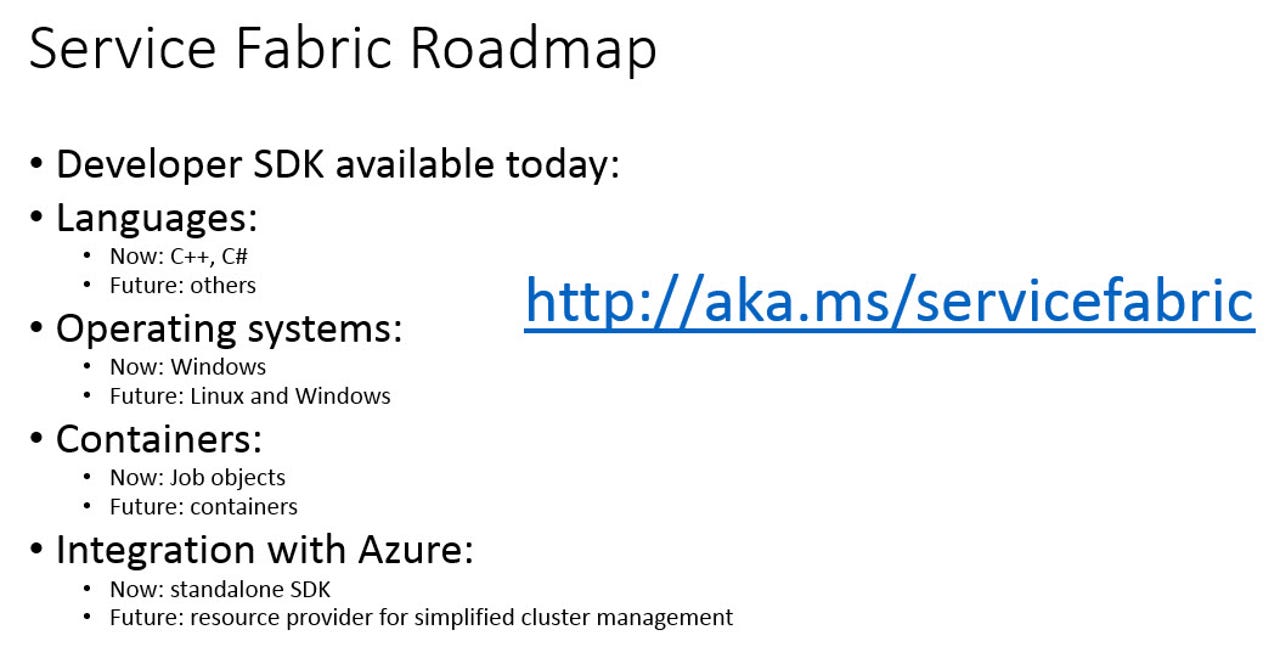Linux, Java and container support coming for Microsoft's Azure microservice platform

Microsoft may have just launched the first developer preview for its Azure Service Fabric in April, but it has a lot more on its microservices platform roadmap.

Using Service Fabric, Azure applications can be decomposed into smaller components, a k a microservices, that can be updated and maintained independently of the underlying infrastructure. The Service Fabric enables the various microservices to communicate with one another via programming interfaces. Microsoft plans to bring Service Fabric to private clouds running Windows Server and hosted clouds at some point in the future, officials have said.
Currently, the Azure Service Fabric platform supports Windows and the C++ and C# languages. But Microsoft is planning to add support for Linux, as well as Java and other languages to the platform, Russinovich said. Adding Windows and Linux container support is on the Service Fabric roadmap, too.
Although Russinovich didn't offer dates, Microsoft is adding Windows container support (both plain-old Windows containers and virtualized Hyper-V containers to Windows Server 2016). A test build of Windows Server 2016 that includes containers is due out later this summer.
Azure Service Fabric, formerly known inside Microsoft as Windows Fabric, has been used inside Microsoft for the past five years. Microsoft is using Service Fabric to power the Azure Database, Azure Document DB, Service Bus and even Cortana, Microsoft's digital personal assistant that builds on top of Bing.
Service Fabric is a key piece of Microsoft's oftware-defined networking (SDN) stack. SDN is the computing architecture via which companies move beyond using propriety/off-the-shelf servers and toward programmable switches, or hosts, to achieve better scaling and performance.
Russinovich dropped another interesting tidbit during his talk this week. Microsoft is starting to roll out Azure SmartNIC network-interface cards inside its Azure datacenters that use field-programmable gate arrays (FPGAs).
Speaking of microservices, containers and hypervisors (oh, my), another video worth watching is the Channel 9 "Windows Containers FAQ" recorded during Microsoft's Ignite show and published last week.
In that video, Microsoft Senior Program Manager Taylor Brown explains the relationship between containers and the Azure Service Fabric -- both of which have a lot to do with microservices. At some point, Azure Service Fabric will take advantage of containers, Brown said. Users will have the option of using Service Fabric in virtual machines, containers and/or both.
"We think people will continue to use VMs for a long time. Containers are just another tool in the toolbox," Brown noted.
Microsoft also is continuing with its work to support the Docker toolset for creating, managing and deploying Windows and Linux containers, while also offering users the choice of PowerShell for container management, Brown said.